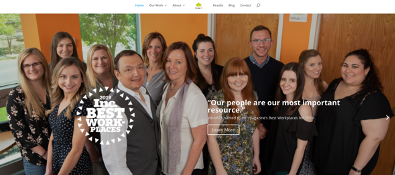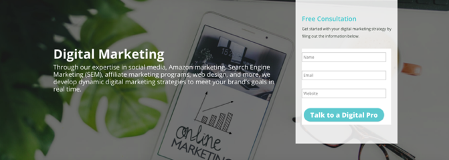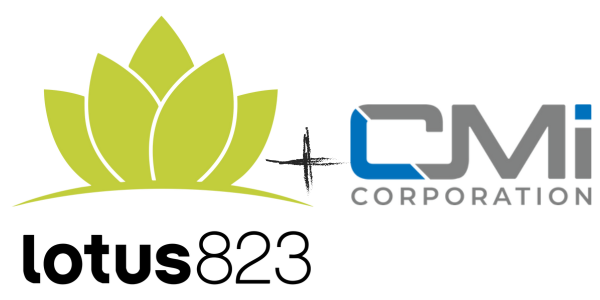Having the power to discover new products and services at the palm of your hand has driven brands to reach consumers by implementing various digital efforts. These efforts include SEO, content marketing, digital advertising, and much more. While all of these tactics are excellent for increasing brand awareness and gaining exposure, which effort is focused on driving conversions? All of these marketing efforts can effectively boost conversions, but to improve the quality and the results produced, landing pages are the key to success. Creating and implementing landing pages may be exactly what your strategy is missing. You may be thinking, “Isn’t that my website’s homepage?” The answer is no, for a few specific reasons. Continue reading to discover the purpose and power of landing pages and how to implement them into your next campaign.

What is a Landing Page?
A landing page is a standalone web page created specifically for a marketing or advertising campaign. When a consumer clicks on your link in an email, Google Ad, or social media post to learn more about your offer, it is where they “land.” Landing pages have one specific goal or focus, which is known as a call to action (CTA). Whereas your website is designed with many goals, including encouraging exploration and informing visitors about your brand, the goal of a landing page is to maximize conversions by eliminating the need to navigate through your site to make a purchase or share their contact information.
What are the Differences Between a Homepage and a Landing Page?
There are two main differences between these digital assets:
- One Link: While your webpage may have various links and other distractions for consumers to browse through, a landing page contains just one, focusing on the call to action. A few examples of CTAs you can include are “Purchase Now” or “Contact Us.”
- One Goal: Your Homepage provides consumers with information about your brand, imagery, testimonials, and more. All of these aspects are very valuable for any business. However, do they necessarily generate sales or leads? The goal of a landing page is to close the deal quickly and seamlessly.
Check out this example of our homepage and our social media landing page to understand the key differences:
You will notice our homepage includes a variety of sections and buttons linking to various pages on our sites. When we are looking to promote our digital marketing services, we always include the link to this landing page. There is one clear, concise headline that displays what the visitor is looking for. The supporting headline adds a bit of extra information to further persuade the visitor to fulfill the call to action. The “Free Consultation” form allows the visit to enter their contact information quickly and easily.
Types of Landing Pages
- Lead Generation: Landing pages designed to generate leads offer consumers some type of benefit, such as a free audit or a free eBook download. In order to receive the benefit, the customer must insert their information into the form. This will provide brands with valuable lead data and will allow you to reach out to them with similar offers, improving the chance of gaining their business.
- Clickthrough: These landing pages are an excellent strategy for consumer products. Once you grab the attention of a consumer with an eye-catching post or an exciting ad, they will be directed straight to this landing page that brings them right to checkout to complete the transaction.
Landing Page Best Practices
- Messaging Match: Whatever you are looking to promote with landing pages, be sure to include the same messaging that drew the customer or lead to click the link. For example, if you are offering 15% off your products, the sale should be the main focus of your landing page.
- Keep the Action Above the Fold: Your call to action should always be seen before the visitor is forced to scroll down, also known as being “Above the Fold.” You got past the top of the marketing funnel by grabbing their attention and compelling them to click the link, make sure the action is easily seen for conversion success! Also, consider whether your target market is using a mobile device or desktop while browsing to design your landing page accordingly.
- Add Valuable Content Toward the Bottom: If visitors are intrigued to continue the scroll, encourage them! Provide additional, valuable information about your product or service toward the bottom of your landing page. This includes images, information about the product or service, testimonials, and more.
- Test it Out: Before committing to your final landing page, consider A/B testing the elements on your landing page. Try different copy, images, colors, layout, headlines and more. This will provide you with valuable intel on which version of your landing page performs the best. Testing your landing page initially will lead to optimal success when you are ready to run your campaign.
- Show Appreciation: Once the call to action has been fulfilled, implement a post-conversion page thanking your customer or lead. This will validate that the visitor made the right choice in trusting your brand and taking the next step.
By following these best practices, your landing page will be designed for Conversion Rate Optimization (CRO), which is the process of enhancing your site to drive conversions. CRO will make your landing page work smarter to generate qualified leads and customers.
Now that you know the fundamentals of a landing page, consider implementing them into your marketing strategy to achieve ideal conversion success!
Do you have a marketing campaign that would pair great with a landing page? Contact us today to help you build a landing page to help you seal the deal!










